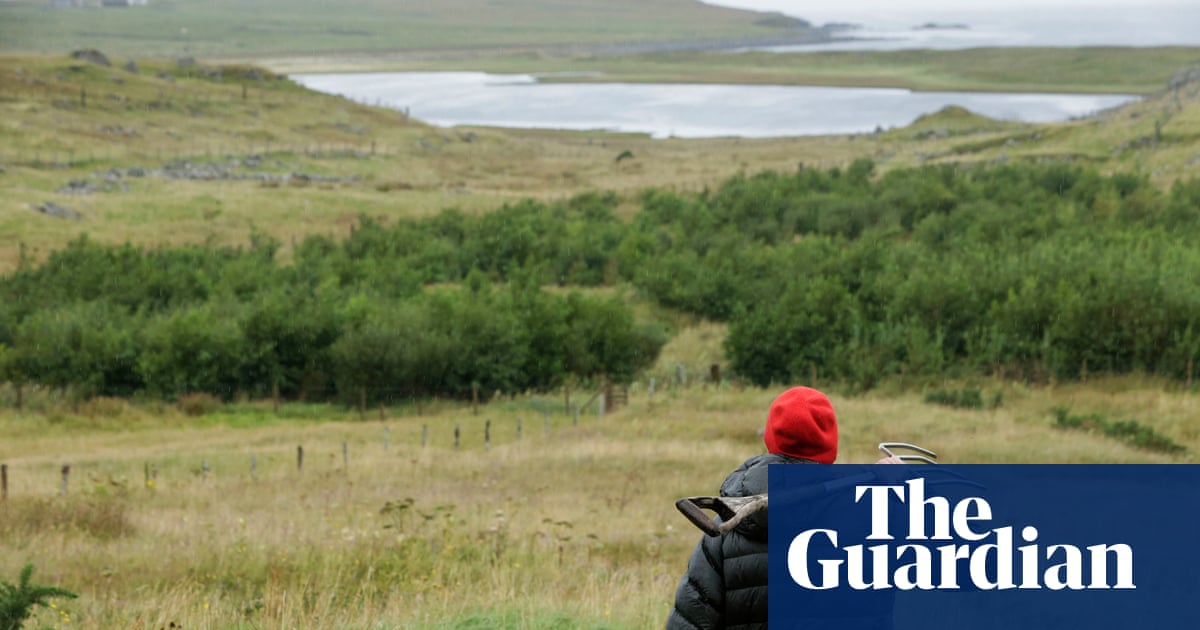An ambitious plan to plant at least a million native trees on crofts in the Outer Hebrides has taken root, its organisers say, with more than 200 small new woods sprouting across the islands.
The Western Isles woodland project hopes to reestablish a thriving mosaic of small woods dotted across the islands by using vacant or underused crofts to reforest the Hebrides and promote nature restoration.
Under the project, funded mainly by profits from the UK’s largest community-owned windfarm, west of Stornoway, 211,000 trees have already been planted on 245 crofts, plots of land that were historically family-run small holdings.
Some of the new woodlands have up to 1,500 trees grown from local seeds, featuring alder, hazel, birch, rowan, Scots pine, blackthorn, sycamore and various species of willow. The project has been so successful it has helped establish three new tree nurseries on the islands.
Many of the saplings come from seeds sourced by Hebridean Tree Ark, which harvests them from native local trees found clinging to cliffs and islands inaccessible to the red deer and sheep that suppress natural regeneration on land.
PJ Maclachlan, a keen kayaker and retired meteorologist who began planting trees in 2018 on his 1.4 hectare family croft near Stornoway airport, often sees old native trees clinging to cliffs and ungrazed islands during his kayaking trips along the coast.
He has planted 950 trees in a boggy, unproductive area of his croft. It was “a great thing” bringing woods back, he said: “The fact it looks treeless isn’t natural: it’s over-grazing. You’re bringing back something which has been lost.”
Some crofters, whose holdings often border the islands’ wind-battered coast line, have included fruit orchards in their new woods, which are reinstating woodlands stripped out for boat-and house-building in the past.
Jon Macleod, 57, an arts curator who bought a 4 hectare croft at Bragar, on the west coast of Lewis in Ordal, the Norse for glen of the alder, has planted 1,200 saplings. By coincidence, the alder trees are flourishing in his woodland, where he has added apples, pears and cherry.
“We’re restoring a landscape which existed a thousand years ago,” he said. Using seeds gathered from local trees greatly increased their chances of prospering – “the survival rate and provenance is relevant to the place”.
Calum Macdonald, the former Labour MP leading the project, hoped it could be a model for community owned energy projects across the UK.
Four-fifth of the woodlands’ funding is from the £900,000 annual profits made by the three 3MW wind turbines owned by Point and Sandwick trust, a community development body. The turbines at Beinn Ghrideag generate up to 30GWh of power a year – enough, Macdonald said, to supply all the Western Isles with electricity.
Macdonald said individual crofters were in charge of planting out their croft, in consultation with Viv Halcrow, the projects adviser, the Woodland Trust, the Scottish Crofting Federation and Scottish Forestry, a government-owned agency.
He hoped that at least a million trees would be planted by 2030. The scheme is open to crofters anywhere in the Outer Hebrides and more than 800 crofters, schools and community groups have been in contact.
after newsletter promotion
“We didn’t want to do it by bringing in a big team of contractors,” he said. “Our vision is for it to expand organically instead, croft by croft, with the crofters owning the project and its legacy.
“We are not planting in moorland or peatland but in the crofting townships, on land which used to have hay, potatoes, and other crops but which now, with the decline of crofting activity over the past 20 years, is increasingly unused.
“We don’t want the crofts to decay and this is a great way of bringing them back to vigorous life. It’s a mosaic approach rather than the big bazooka employed in other environmental projects.”
Woodland owners will also need to combat the deer that roam in some areas; the moors have been denuded of trees by sheep and cattle, sent on to common grazings during the summer.
This project was set up to recycle renewable energy profits into community wealth-building and improvements, he said, in contrast to the large-scale multi-national owned wind farms causing resentment amongthe communities nearby.
Green energy schemes generally employ only a handful of staff and engineers whereas community ownership allows people to capture the profits they produce and reinvest them locally, Macdonald said. In Denmark, about half of turbines are community-owned.
Many rural communities in the UK feel excluded from the profits generated by energy firms, and resent the large turbines, sub-stations and large pylons built in their areas. “I would love to use the green energy revolution to get a lot more long-term benefits for our communities,” Macdonald said.
Macleod agrees. “No one is against renewable energy here but community benefit is key, otherwise it’s just exploitation,” he said.
